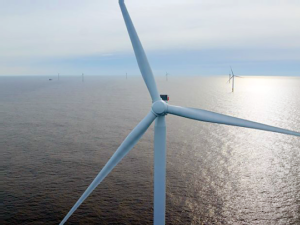U.S. Flexes Refining Muscles to Satisfy Mexico Fuel Thirst
By: Laura Blewitt | Nov 08 2017 at 07:53 PM | International Trade
U.S. refiners are setting up for the strongest end-of-year they’ve ever had, and it’s all thanks to Mexico.
Nationwide gross oil refinery inputs will rise above 17 million barrels a day before the year ends, according to Energy Aspects, even amid a busy maintenance season and interruptions at plants in the the U.S. Gulf of Mexico that were clobbered by Hurricane Harvey in the third quarter.
“We’re going to hit very high runs in the next two months,” Robert Campbell, head of research at Energy Aspects, said by phone. “The balance looks quite bullish. Can the U.S. export it? Yeah. It will.”
The chance to skip out on compliance with costly U.S. biofuels regulations by exporting fuel is a huge incentive for overseas sales. Under the Renewable Fuel Standard, refiners aren’t required to buy blending credits called RINs for barrels that are exported. Mexico has potential to demand 600,000 barrels a day of gasoline imports as its own refineries limp.
America’s southern neighbor has continued to be its best customer as its own fuel factories suffer from inefficiencies and breakdowns—in September Mexico’s crude processing fell to the lowest since December 1990, or about 33 percent of its total national operating capacity.
Bullish fundamentals have supported refiners throughout the year. The Bloomberg Intelligence North America refining index is up 73 percent over the past year.
Needs More Fuel
Petroleos Mexicanos came knocking on the Gulf Coast’s door for more supplies early this week. As full operations at its largest refinery, Salina Cruz, aren’t expected until year-end, and its Cadereyta and Minatitlan plants are also in turnaround, at least seven ships capable of hauling 2.1 million barrels of fuel were provisionally booked to load gasoline and diesel through Nov. 16.
As of last week, total U.S. gasoline stockpiles were about 5 percent lower than the same time last year, and have fallen below the five-year seasonal average. But that’s no reason for Gulf Coast refiners to hold back, according to Campbell.
“The U.S. is down 20 million barrels since Hurricane Harvey,” he said, however those draws are showing up in the Midcontinent and East Coast regions. “The capacity is there to supply these markets.”
U.S. gasoline exports rose to a record 936,000 barrels a day last December as Pemex scrambled to buy fuel before its historic energy reform introduced increases in retail prices at the pump. The shock of higher fuel prices sent Mexico’s consumers into hysterics and protesters lined the streets to decry the so-called “gasolinazo.”
RIN Factor
U.S. refiners can benefit from avoiding the obligation to blend its petroleum-based fuels with biofuels.
The credits for 2017 compliance rose more than 200 percent since the first quarter after President Donald Trump’s perceived promise of relief faded, according to Starfuels Inc. pricing data compiled by Bloomberg. Federal investigators issued subpoenas on the program’s loudest critic, billionaire investor Carl Icahn, last week seeking information on his efforts to change the policy.
“As long as the price is right, Gulf Coast refiners will favor gasoline exports to Mexico over marginal domestic sales,” said Sandy Fielden, director of research and commodities for Morningstar Inc in Austin, Texas. “That’s because exports don’t attract RINs and the volumes are needed to keep refinery throughput at profitable levels.”
